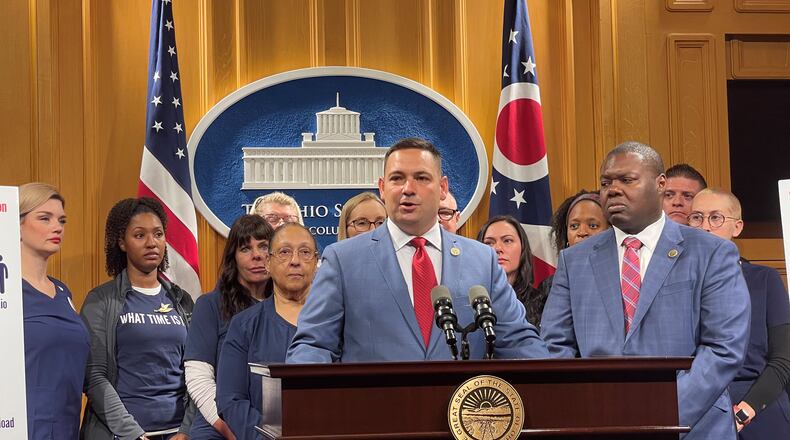The Workforce and Safe Patient Care Act, which does not have a bill number yet, would establish staffing standards in all Ohio hospitals, which only allow deviations “in extraordinary circumstances in the interest of patient care,” the Ohio Nurses Association said.
The legislation would create a $20 million loan-to-grant program for nurses who complete five years of nursing services in the state of Ohio, either at the bedside or nurse education. It would also preserve nurse staffing committees, create a reporting systems to file complaints against hospitals that don’t meet minimum levels, and provide whistleblower protections.
“Ohio’s nurses and healthcare workers are tired and fed up with hospital administrators turning a blind eye to the unsafe staffing conditions, and this bill is a step in the right direction,” said Robert Weitzel, president of the Ohio Nurses Association, which represents 200,000 nurses in the state. “We are in a patient care crisis, but this legislation will guarantee safety for patients and healthcare workers in Ohio’s hospitals.”
Seven out of 10 direct care nurses are considering leaving bedside nursing due to current conditions, the Ohio Nurses Association said following a statewide survey. Nearly 89% of direct care nurses said nurse-to-patient radios in Ohio would increase their likelihood of remaining in a direct-care role, according to the survey.
“We want to make sure that patients and nurses in Ohio’s hospitals are safe,” Rogers said. “Inadequate nurse staffing levels are linked to higher rates of patient falls, infections, medication errors and even death. The bill we introduced today is a big step in the right direction to help address patient and nurse safety.”
Implementing patient-to-nurse ratios would hinder local hospitals’ ability to make staffing decisions for their patient populations, the Greater Dayton Area Hospital Association said.
“Evidence-based staffing models that require collaboration between nurses, physicians, and administrators allow hospitals to ensure that the specific needs of each hospital are met to make informed staffing decisions,” said Sarah Hackenbracht, president and CEO of Greater Dayton Area Hospital Association.
GDAHA hospitals prioritize patient safety along with employee well-beings, Hackenbracht said. GDAHA represents 29 member hospitals and health organizations, serving people of 11 Ohio counties including Auglaize, Butler, Darke, Champaign, Clark, Greene, Miami, Montgomery, Preble, Shelby, and Warren.
“While staffing ratios have been proposed as a solution to improve patient safety and retain nurses in acute care settings, delivering care in a hospital setting requires operational nimbleness to respond to a dynamic and complex environment,” Hackenbracht said.
Patient needs can change rapidly, she said, which necessitates flexibility in staffing levels.
“Implementing rigid nurse staffing ratios can limit a hospital’s ability to allocate resources efficiently based on the unique requirements of their overall patient population. Hospitals require the autonomy to adjust staffing based on patient acuity and individual care plans,” Hackenbracht said.
About the Author

